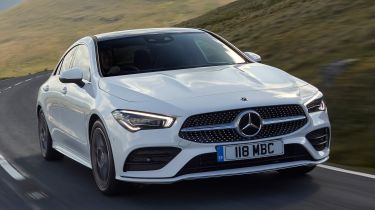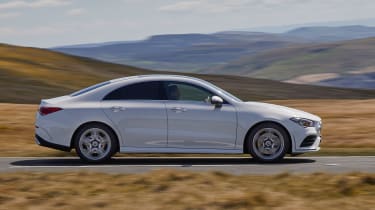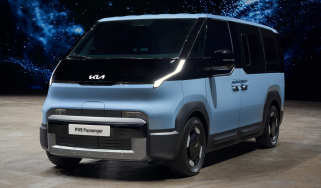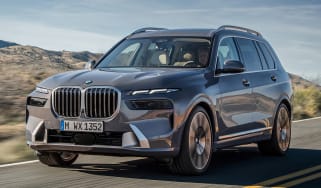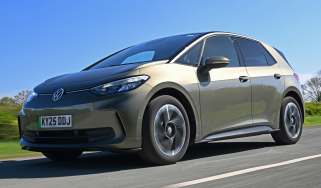Mercedes CLA review - MPG, CO2 and running costs
A range of petrol, diesel and plug-in hybrid engines means that there’s a balance of performance and economy to suit most buyers

As with most Mercedes models, there’s a large range of engines to choose from when ordering a CLA. The overwhelming majority of these are petrol engines; 1.3 and 2.0-litre units with a variety of outputs. Economy is reasonable across the board, but it’s the CLA 220d diesel that’s the best choice of the fossil fuel versions, if low running costs are your primary concern.
However, the top performer across the range for economy is the 250 e plug-in hybrid. Mercedes claims that, with regular charging, the 250 e is capable of returning up to 282.5mpg on the combined cycle. It also has an all-electric range of up to 40 miles, with a top speed then limited to 87mph.
Buyers looking for diesel power only have the option of the CLA 220d. In Coupe form it returns 53.3-56.5mpg, depending on trim – more or less on par with the BMW 220d Gran Coupe. The Mercedes emits 132g/km in AMG Line trim, which will equate to a 31 per cent Benefit-in-Kind (BiK) charge for company car buyers.
The CLA 180 and CLA 200 both use the same 1.3-litre four-cylinder engine, tuned to 134bhp and 161bhp respectively, with economy and emissions virtually identical at around 43-46mpg (on the WLTP combined cycle) and 138/139g/km of CO2.
Used - available now

2025 SEAT
Ateca
19,591 milesAutomaticPetrol1.5L
Cash £20,086
2022 Toyota
C-HR
30,493 milesAutomaticPetrol2.0L
Cash £20,790
2019 Citroen
C3 Aircross
49,228 milesManualPetrol1.2L
Cash £8,999
2023 Audi
TT
61,207 milesAutomaticPetrol2.0L
Cash £16,499The more powerful CLA 250 is no longer available on the price list, although if you track down a used example you should see around 38-42mpg, with 138g/km of CO2.
Opting for either AMG model means sacrificing economy in the name of performance. The Mercedes-AMG CLA 35 4MATIC returns 31.7-34.9mpg and emits 184g/km. These figures aren’t terrible for such a potent hot hatch, however. The full-fat AMG 45 S 4MATIC+ is even more powerful and so returns a maximum of 31.7mpg, with a hefty 202g/km.
The Shooting Brake versions of each of these is marginally less efficient, with CO2 emissions and therefore BiK ratings rising ever so slightly for most engines. Claimed fuel economy also takes a slight hit, but the differences in actual use will be marginal.
Insurance groups
The CLA roughly occupies insurance groups 27 to 43 depending on which model you choose; the CLA 180 petrol is the cheapest to insure and the AMG models are the most expensive. The CLA Shooting Brake sits roughly within groups 26 to 39.
Depreciation
According to our experts, the CLA Coupe will retain up to 55 per cent of its value after three years and 36,000 miles come trade-in time, with the 180 petrol and plug-in hybrid models the best bets for the strongest second-hand values. The Shooting Brake estate model performs broadly the same.

